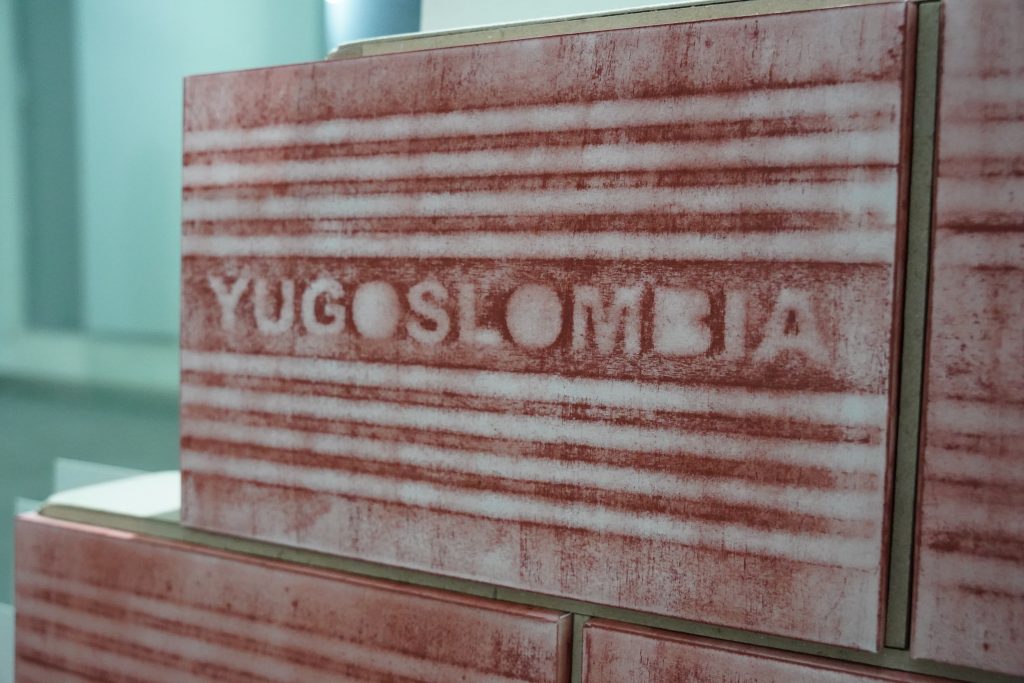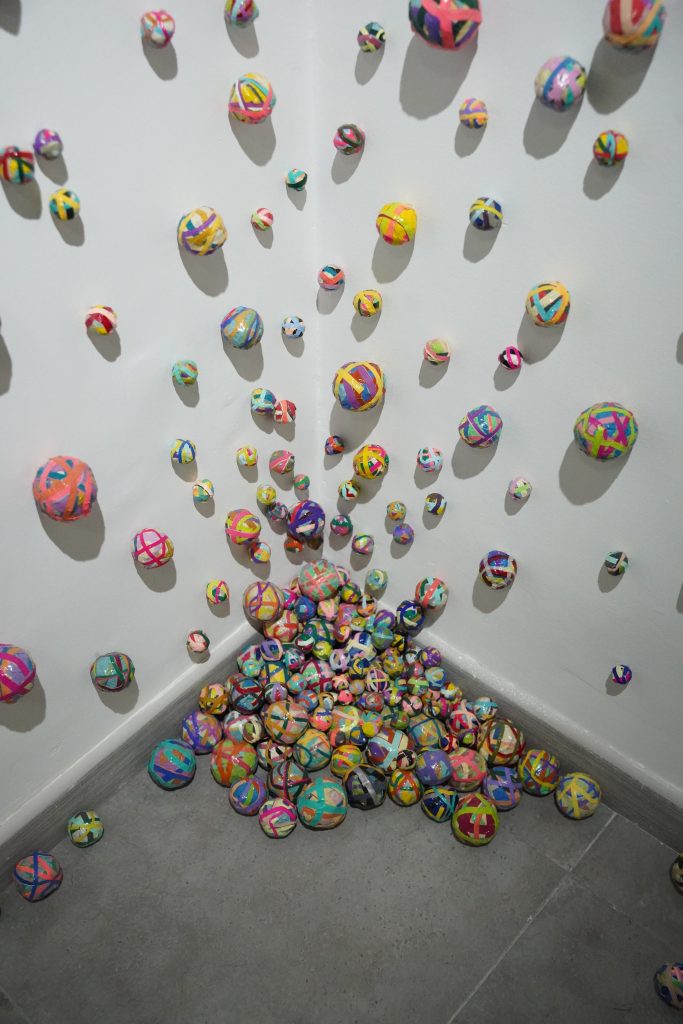
“Home is not always built with bricks. Sometimes, a piece of tape, a sheet of paper, an old box, an improvised shirt is enough. The domestic is not defined by what lasts, but by what cares, what protects, what contains. In Vestigios, Jorge Magyaroff explores the construction of habitat from an intimate and experimental perspective, guided by an impulse that has accompanied him since childhood: the need to replicate the world through the materials that surround him.
As a child, Magyaroff found in the creation of his own toys a way to understand the immediate universe. With basic tools—tape, glue, scissors, and whatever was within reach—he would dismantle objects and reconstruct them in his own way. That practice, as much linked to play as to the artistic gesture, involved not only an active relationship with matter, but also with the very idea of utility: an object could resemble another without necessarily fulfilling the same function. The form was approximated, but the use became blurred. And in that small shift, another logic, another possibility, would emerge.

In Vestigios, that logic is reactivated through an adult gaze, though one deeply connected to childhood intuition. The pieces that make up Vestigios are household objects reconstructed with recycled materials, leftovers from other works, and elements commonly considered disposable: a ball made of tape, an umbrella made of cardboard and paint, shirts made of tissue paper, a wall of bricks made of paper and cardboard, a nest made of paper. They are not replicas, but evocations: presences that retain the spirit of the domestic, yet have been stripped of their functionality.

When does a space become a home? Is it possible to build shelter from waste? How do we inhabit and transform the places we live in?
For Magyaroff, the house is not a fixed structure, but one that is constantly modified through use, through wear, through gestures. A house is inhabited to the extent that it is transformed. And it is precisely in that transformation where traces appear: the vestiges.
One of the poetic cores of the exhibition arises from an apparently simple event: a pigeon building a nest on the window of his studio. Unable to access the spot to remove it, Magyaroff observed the entire process, from the gathering of materials to the birth and departure of the chicks. But it wasn’t a nest made of twigs or straw, as we typically imagine. Instead, it was made of candy wrappers, plastic fibers, crumpled paper: urban materials, foreign to the natural landscape, transformed into shelter, into containment. The city, with all its hostility, offered a different kind of resource.
This gesture of attentive observation runs throughout the exhibition. Magyaroff does not impose a form, but lets the materials speak. What appears fragile (paper, tape, cardboard) reveals an unexpected strength when joined with other elements. His works explore the tension between what is built and what collapses; between what protects and what no longer serves; between what can still be, and what seemed already lost.
Vestigios is a reflection on how we inhabit the world with what we have at hand. How, even in scarcity or waste, we continue to imagine safe spaces. How form, even without utility, retains its symbolic power. And how objects, stripped of their function, can become silent witnesses of our way of being in the world.”

